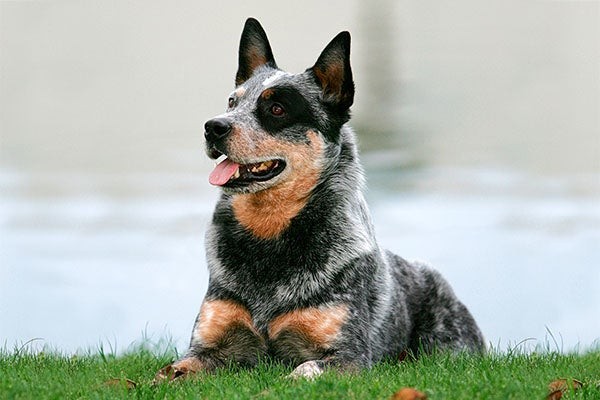
The Australian Cattle Dog (ACD), despite its popularity as an intelligent and energetic working breed, is not considered hypoallergenic. These muscular herding dogs possess a distinctive double coat that sheds year-round, with heavier shedding occurring biannually during seasonal changes. The combination of regular shedding, dander production, and active lifestyle makes ACDs challenging for individuals with pet allergies. While regular grooming and cleaning can help manage allergens, their coat characteristics and protein-containing bodily secretions mean they produce typical amounts of allergenic substances, making them unsuitable for allergy sufferers seeking a hypoallergenic companion.
Australian Cattle Dog Allergen Characteristics
Allergen Sources Beyond Shedding
While previous sections covered shedding-related allergens, Australian Cattle Dogs produce other significant allergen sources that affect allergy sufferers. According to studies, these include:
- Saliva proteins released during grooming and panting
- Skin cells (dander) shed continuously, not just during coat blowing
- Urine proteins that can become airborne when dried
Impact of Activity Level on Allergen Exposure
The high energy and activity level of Australian Cattle Dogs directly impacts allergen dispersal. Their constant movement and exercise requirements mean:
- Increased panting leads to more saliva protein release
- Active play kicks up settled dander into the air
- Higher activity creates more skin cell shedding through friction
- Greater spread of allergens throughout living spaces during play
Understanding these characteristics helps allergy sufferers better manage exposure through proper ventilation, cleaning routines, and creating allergen-free zones in the home.
Understanding Australian Cattle Dogs and Their Non-Hypoallergenic Nature
Coat Type and Allergen Production
Australian Cattle Dogs have a double coat consisting of a glossy outer layer and dense undercoat that sheds year-round. This coat type means they:
- Release dander continuously through normal shedding
- Experience heavy seasonal shedding twice yearly during "coat blows"
- Require regular brushing to manage loose fur and dander
Managing Allergy Symptoms Effectively
While the previous section covered allergen sources, this section focuses on practical management strategies. Key approaches include:
- Using HEPA air purifiers to filter airborne allergens
- Regular vacuuming with HEPA-equipped vacuums
- Maintaining designated dog-free zones, especially bedrooms
- Consulting an allergist about immunotherapy options
- Washing hands and changing clothes after direct contact
- Following a consistent 4-6 week bathing schedule with anti-allergen shampoos
Hypoallergenic Alternatives to Australian Cattle Dogs
Doodle Breed Options
While previous sections covered managing allergies with ACDs, this section focuses specifically on hypoallergenic alternatives. Several doodle breeds combine herding instincts with allergy-friendly coats:
- Australian Mountain Doodle: Cross between Australian Shepherd, Bernese Mountain Dog and Poodle
- Sheepadoodle: Mix of Old English Sheepdog and Poodle
- Aussiedoodle: Australian Shepherd and Poodle hybrid
These breeds feature:
- Non-shedding, hypoallergenic coats
- Strong herding abilities inherited from parent breeds
- High intelligence and trainability
- Family-friendly temperaments
For allergy sufferers seeking a herding dog's traits without the allergic reactions, these doodle breeds offer viable alternatives to the Australian Cattle Dog while maintaining similar working capabilities and drive.
Conclusion
Australian Cattle Dogs are definitively not hypoallergenic due to their double coat that sheds year-round and multiple allergen sources including saliva proteins, dander, and urine proteins. Their high energy levels and activity requirements further increase allergen dispersal throughout living spaces. While allergy symptoms can be managed through strategies like HEPA air purification, regular cleaning, and designated dog-free zones, these dogs may not be suitable for individuals with significant pet allergies.
For allergy sufferers specifically interested in herding breeds, several hypoallergenic alternatives exist in the form of doodle breeds like the Australian Mountain Doodle, Sheepadoodle, and Aussiedoodle. These crosses maintain herding abilities while featuring non-shedding coats better suited for those with allergies. Prospective owners with allergies should carefully consider these alternatives or consult with an allergist before committing to an Australian Cattle Dog.